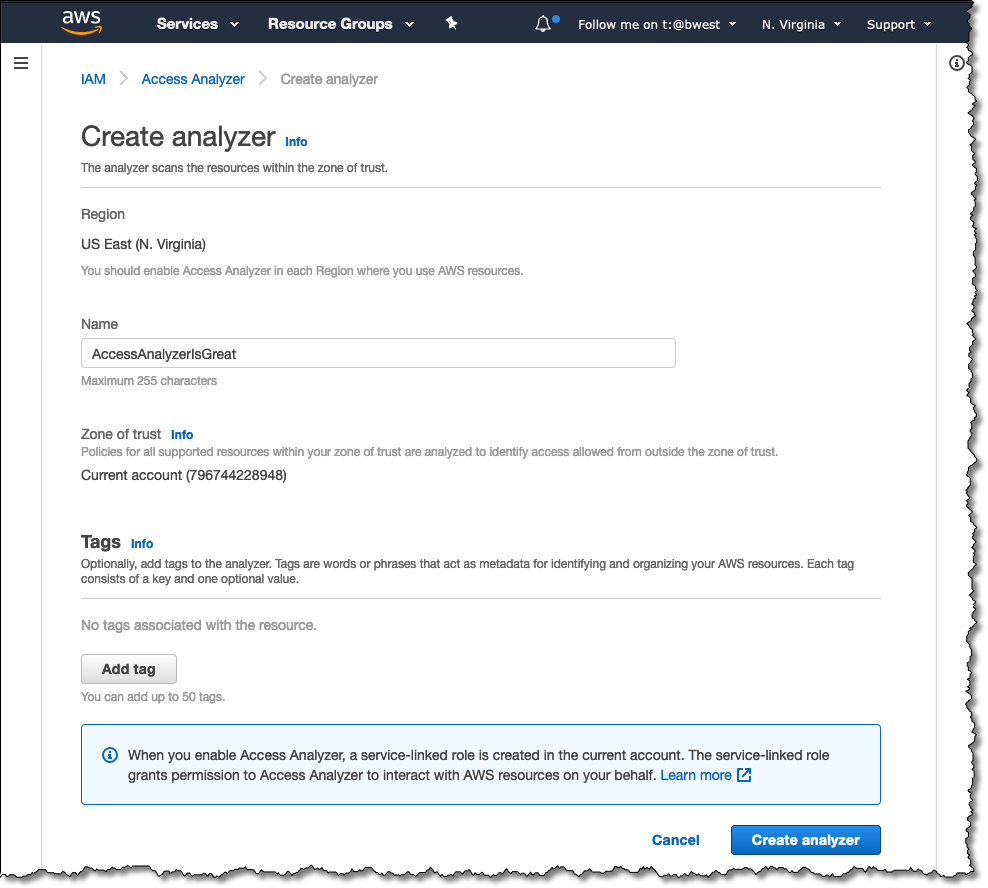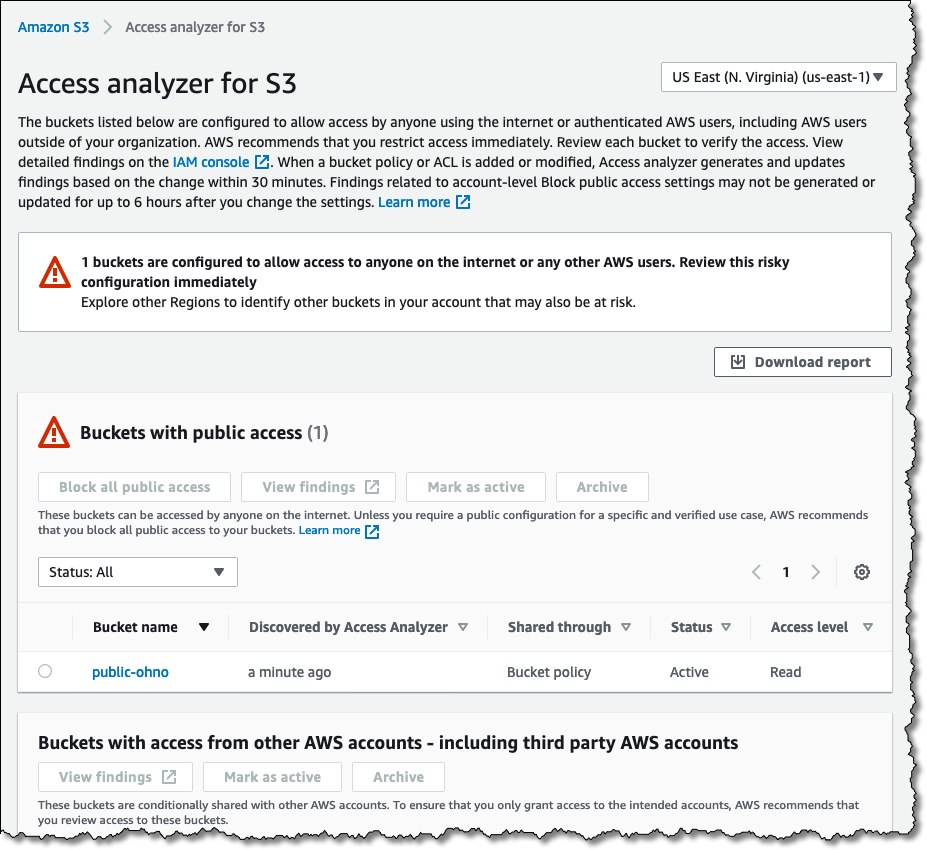AWS News Blog
Identify Unintended Resource Access with AWS Identity and Access Management (IAM) Access Analyzer
|
|
Today I get to share my favorite kind of announcement. It’s the sort of thing that will improve security for just about everyone that builds on AWS, it can be turned on with almost no configuration, and it costs nothing to use. We’re launching a new, first-of-its-kind capability called AWS Identity and Access Management (IAM) Access Analyzer. IAM Access Analyzer mathematically analyzes access control policies attached to resources and determines which resources can be accessed publicly or from other accounts. It continuously monitors all policies for Amazon Simple Storage Service (Amazon S3) buckets, IAM roles, AWS Key Management Service (AWS KMS) keys, AWS Lambda functions, and Amazon Simple Queue Service (Amazon SQS) queues. With IAM Access Analyzer, you have visibility into the aggregate impact of your access controls, so you can be confident your resources are protected from unintended access from outside of your account.
Let’s look at a couple examples. An IAM Access Analyzer finding might indicate an S3 bucket named my-bucket-1 is accessible to an AWS account with the id 123456789012 when originating from the source IP 11.0.0.0/15. Or IAM Access Analyzer may detect a KMS key policy that allow users from another account to delete the key, identifying a data loss risk you can fix by adjusting the policy. If the findings show intentional access paths, they can be archived.
So how does it work? Using the kind of math that shows up on unexpected final exams in my nightmares, IAM Access Analyzer evaluates your policies to determine how a given resource can be accessed. Critically, this analysis is not based on historical events or pattern matching or brute force tests. Instead, IAM Access Analyzer understands your policies semantically. All possible access paths are verified by mathematical proofs, and thousands of policies can be analyzed in a few seconds. This is done using a type of cognitive science called automated reasoning. IAM Access Analyzer is the first service powered by automated reasoning available to builders everywhere, offering functionality unique to AWS. To start learning about automated reasoning, I highly recommend this short video explainer. If you are interested in diving a bit deeper, check out this re:Invent talk on automated reasoning from Byron Cook, Director of the AWS Automated Reasoning Group. And if you’re really interested in understanding the methodology, make yourself a nice cup of chamomile tea, grab a blanket, and get cozy with a copy of Semantic-based Automated Reasoning for AWS Access Policies using SMT.
Turning on IAM Access Analyzer is way less stressful than an unexpected nightmare final exam. There’s just one step. From the IAM Console, select Access analyzer from the menu on the left, then click Create analyzer.
Analyzers generate findings in the account from which they are created. Analyzers also work within the region defined when they are created, so create one in each region for which you’d like to see findings.
Once our analyzer is created, findings that show accessible resources appear in the Console. My account has a few findings that are worth looking into, such as KMS keys and IAM roles that are accessible by other accounts and federated users.
I’m going to click on the first finding and take a look at the access policy for this KMS key.
From here we can see the open access paths and details about the resources and principals involved. I went over to the KMS console and confirmed that this is intended access, so I archived this particular finding.
All IAM Access Analyzer findings are visible in the IAM Console, and can also be accessed using the IAM Access Analyzer API. Findings related to Amazon S3 buckets can be viewed directly in the S3 Console. Bucket policies can then be updated right in the Amazon S3 Console, closing the open access pathway.
You can also see high-priority findings generated by IAM Access Analyzer in AWS Security Hub, ensuring a comprehensive, single source of truth for your compliance and security-focused team members. IAM Access Analyzer also integrates with CloudWatch Events, making it easy to automatically respond to or send alerts regarding findings through the use of custom rules.
Now that you’ve seen how IAM Access Analyzer provides a comprehensive overview of cloud resource access, you should probably head over to IAM and turn it on. One of the great advantages of building in the cloud is that the infrastructure and tools continue to get stronger over time and IAM Access Analyzer is a great example. Did I mention that it’s free? Fire it up, then send me a tweet sharing some of the interesting things you find. As always, happy building!
— Brandon


